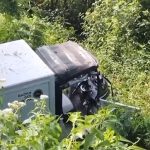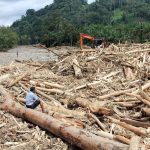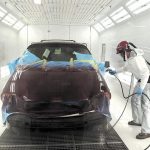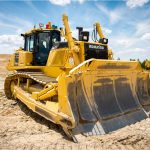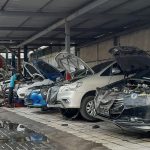The Free Nutritious Meals (MBG) program is currently in the public spotlight. Despite the noble intention of meeting the community’s nutritional needs, a real threat lurks in the production kitchens: fire.
In recent months, reports of fires in MBG kitchens have begun to emerge in various regions. Fires caused by gas leaks, electrical short circuits, and even minor negligence can escalate into major disasters. Data from the National Disaster Management Agency (BNPB) in 2024 showed more than 2,000 kitchen and restaurant fires in Indonesia, mostly caused by substandard gas installations and inadequate equipment maintenance. If this trend continues without anticipatory measures, the MBG program could face systemic risks of supply disruptions, asset losses, and potential lawsuits from the public. This is a crucial time to take preventative measures through risk identification and appropriate insurance coverage.
The Wave of MBG Kitchen Fires That Cannot Be Ignored
Data from the National Disaster Management Agency (BNPB) in 2024 is a wake-up call. The figure of 2,000 kitchen fires indicates that cooking areas, especially those operating commercially and in large quantities, are the most vulnerable. MBG kitchens, operating under high volumes and time pressures, inherit all of these risks.
Imagine a suburban MBG kitchen that prepares 5,000 meals each morning. In the rush, a staff member forgets to close the gas valve after replacing the cylinder. A single spark from the stove ignites the gas-saturated air. Within seconds, the kitchen is engulfed in flames.
Incidents like this can lead to more than just lost equipment, operational disruptions, food spoilage, and potential loss of life. Without insurance, losses of hundreds of millions of rupiah could directly impact the management, while legal liability (public liability) can come from many directions: local governments, vendors, and even the beneficiary community.
This is proof that kitchen fire risks are not to be taken lightly. As insurance brokers, we at L&G Insurance Broker frequently find that many social program managers lack adequate coverage against the risk of kitchen fires. Yet, insurance solutions are available and can be tailored to your budget and production scale.
Why MBG Kitchens Are Prone to Fire
Several factors make MBG kitchens a fire-prone area. The combination of high production volumes and limited facilities creates ideal conditions for disaster:
- High Production Volumes and Overloaded Equipment: Multiple heating appliances (industrial stoves, large ovens, deep fryers) are used simultaneously and continuously. This increases the risk of overheating and electrical short circuits in aging installations.
- Loose Supervision and Minimal Training: Staff in MBG’s kitchens don’t always have the standard fire safety training required of professional chefs. Human error is a major factor.
- Gas and Electricity Intensive Equipment: Reliance on LPG gas and additional electrical installations for lighting or cooling increases the potential for gas leaks and short circuits.
- Improper Ventilation and Installation: Commercial kitchens require strong ventilation to remove grease and heat vapors. Poor installation can allow grease to build up in the ventilation ducts, which can quickly lead to a grease fire.
- Lack of Early Detection Systems: Many kitchens do not have sufficient APAR (Light Fire Extinguishers), smoke detectors, or automatic gas/electricity shut-off systems, making fires difficult to control in the early minutes.
Without an integrated security system, the risk of fire increases up to five times compared to a typical household kitchen. Therefore, MBG managers need to conduct a thorough risk assessment, guided by professionals familiar with insurance and risk management.
Risk Identification Is the First Step Towards Protection
Before discussing insurance, the most important step is risk identification. A competent insurance broker, like L&G Insurance Broker, will typically map out all potential hazards in the field, including:
- Risk of Ignition Sources: Condition of the stove, LPG hose, reliability of electrical installation, and placement of flammable materials.
- Human Risks: Staff negligence, inadequate training levels, and implementation of SOPs during shift changes.
- Facility Risks: Ventilation conditions, kitchen layout, distance between appliances, and floor conditions (prone to slip & fall).
- Environmental Risks: Densely populated areas (potential public liability), difficult access for fire engines, and food storage.
The results of this identification form the basis for developing risk recommendations—a series of technical and financial suggestions to make the kitchen safer and more economical. Examples include installing an early fire detection system, placing fire extinguishers at every point, and implementing standard operating procedures (SOPs) for mass cooking safety.
Risk Recommendations That Must Be Implemented Immediately
Based on general findings in the field, the following are risk mitigation recommendations for MBG kitchens that must be implemented immediately:
- Conduct a kitchen safety audit at least every three months. Focus on gas installations and electrical systems to prevent electrical short circuits.
- Emergency response training (fire drill and use of APAR) for all workers.
- Regular maintenance and inspection of gas appliances and electrical cables by certified technicians.
- Placement of fire extinguishers (APAR) and fire blankets in strategic areas (near the stove and deep fryer).
- Preparation of SOPs for kitchen operations and evacuation that are easy to understand for all staff.
- Installing an exhaust system and cleaning the duct regularly to prevent grease fires.
However, even with all these measures, the risk of fire cannot be completely eliminated. This is where fire insurance becomes essential for financial protection.
The Role of Property Insurance in the MBG Program
Property All Risks (PAR) insurance covers losses due to fire, explosions, and lightning that damage kitchen buildings, equipment, and food supplies. This policy coverage can be extended to include:
- Machinery and Cooking Equipment Breakdown: Replacing industrial cooking equipment damaged by fire or sudden mechanical failure.
- Business Interruption: Covers financial losses due to kitchen stopping operations following a fire.
- Food Stock Loss: It is important for the MBG kitchen because staple food stocks are valuable assets that must be replaced immediately.
- Water Damage and Burst Pipe Expansion: Additional risks from leaking pipes or flooding that damage the kitchen.
For MBG organizers, fire insurance is not just an administrative requirement, but an investment to ensure program sustainability. L&G Insurance Brokers can help adjust coverage amounts, add-on clauses, and extended coverage to ensure protection aligns with field conditions and the social program budget.
Protecting Yourself from Third Party Claims
In addition to fire, public liability insurance is an important protection when a kitchen fire or operational incident impacts third parties, such as the fire spreading to surrounding buildings or causing injuries to employees and residents. Some public liability risks in commercial kitchens include:
- Neighboring Property Damage: Fire from MBG’s kitchen spread to the shophouse or house next door.
- Visitor/Vendor Injuries: Vendor staff injured by slipping in the kitchen or being injured by equipment.
- Mass Food Poisoning: Lawsuits from beneficiary communities if food is contaminated or causes illness.
Without a public liability policy, managers could face billions of rupiah in compensation claims. With legal liability insurance, compensation and legal costs are covered by the insurance company, allowing program implementers to focus on recovery and continuing activities.
Additional Protection to Close MBG Kitchen Risk Gap
In addition to the two main policies (Fire/PAR and Public Liability), here are some additional coverages that an MBG kitchen should have:
- Machinery Breakdown Insurance – Replaces industrial cooking equipment damaged by non-fire mechanical or electrical failure.
- Employee Insurance (Personal Accident) – Protects kitchen staff from injury or death while on duty.
- Business Interruption Insurance – Covers losses due to a temporary kitchen shutdown, ensuring the program can be quickly resumed.
All of this can be designed in one risk management plan package by L&G Insurance Broker, with an approach tailored to the needs of each MBG location and social program budget.
Conclusion
The rise in MBG kitchen fires is a serious warning to all parties involved in large-scale social programs. The high risk of kitchen fires, triggered by electrical short circuits, gas leaks, and operational negligence, can no longer be ignored. There is no room for delaying risk mitigation or dismissing it as trivial. One small spark has the potential to paralyze the production kitchen and disrupt the distribution of thousands of nutritious meals. Technical preventative measures must be supported by strong financial defenses.
The best solution for MBG managers is integrated protection that includes property/fire insurance for physical assets and public liability insurance for lawsuit risks. L&G Insurance Broker is ready to be your risk management partner, from risk identification and implementing security recommendations to fire and liability insurance coverage tailored to your program budget. We will ensure your premiums are efficient and your coverage maximized through strong negotiations with insurance companies.
Don’t wait until the risk of causing significant losses and stopping this noble program. Take proactive action now. Contact L&G Insurance Broker now on 08118507773 For a free consultation before the risk occurs. Because one small spark can burn down an entire kitchen, but one protective measure can save thousands of nutritious meals across Indonesia. L&G Insurance Broker is committed to helping the MBG program run safely and sustainably.
Source:




